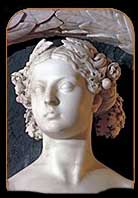
When King William died in 1837, the
granddaughter of George III became Queen of Great Britain. Her name was
Victoria and she was eighteen years old.

The age of invention
The Victorian period was a time of great improvement and transformation for
Scotland and the rest of Great Britain. There were many improvements and new
inventions which altered the way people lived. They made it
dramatically different from before. Some of the most important developments
included the telephone, which was invented by Sir Alexander Graham Bell when
he was living in America in 1875. Gas lighting was invented by William
Murdoch from Ayrshire and in 1803. The foundry he managed was the
first industrial site to be lit by gas. It was not long before gas was used
to light up the city streets at night and in people's homes. Steam power
also brought great changes and it was used to power machinery and in
transports such as boats and trains. The first steam train was invented by
George Stevenson. It ran between Glasgow and Garnkirk in Lanarkshire
in 1831. Improved transport meant improved communications; Scotland's major
cities were linked by rail.
Agricultural and Industrial Revolutions
There were revolutions in agriculture and industry, which resulted in a
change in employment for most Victorians. Farm workers moved to the towns
and cities to find work in factories or coal fields. Most Scottish
Victorians had jobs in heavy industry (mining, shipbuilding,
engineering, or iron and steel manufacturing). The old domestic jobs like
maidservant and cook still existed, but there were new jobs as new shops needed
assistants, hospitals needed nurses, and schools needed teachers. Women
worked as typists in offices, using the new typewriters, or on the telephone
exchanges. Some women worked in the factories, in poor conditions and for
very little pay. Victorian women had no rights or unions to represent them,
and were not allowed to vote. Some people still worked on the land, as
farmers in the Highlands. The industrial workers brought great
wealth to Scotland but they were often very badly paid. They worked for very
long hours in terrible conditions, and lived mainly in the filthy slums of
the big cities. Overcrowding was a massive problem; families shared single
rooms in the tall tenement buildings without toilets or water. Disease and
illnesses like typhus, cholera and tuberculosis were widespread. Many
died because of their appalling living conditions.
Improvements in life
Change was slow because of the way that government and parliament was
organized. Originally only the very wealthy could vote. People began to
protest about this because they wanted fair representation in Parliament, and
eventually more working men were given the vote in the Reform Act of 1832.
Improvements came about when the local burgh councils changed. Councilors were elected by the householders, who wanted things to be different. Councilors agreed that living conditions needed to be improved and arranged for clean water to be piped into cities from nearby lochs. Sewage and drainpipes were also laid and streets were paved. Other changes included the provision of public baths, wash houses, hospitals, gas lighting, libraries, museums and parks. Then Education Act of 1872 made schooling compulsory for all children aged five to thirteen so that all children would learn to read and write. Slums were cleared and council houses were built.
Life improved for all except the extremely poor in Victorian times. Cities grew as industry expanded, providing more jobs for more people. Horse drawn buses, and later trams, took people to and from work every day. Gas lighting and electricity were used in most homes by the middle of the 19th century. Leisure and relaxation became important Golf became an organized sport, and the Scottish Football Association was formed in 1873. Holidays to the seaside resorts became popular as the improvements in transport made it more accessible to more people.Queen Victoria was very interested in Scotland and visited many times with her husband Prince Albert. She bought Balmoral Castle as a holiday home. This sparked a nation-wide interest in the Highlands among the wealthy Victorians. They bought Highland estates for fishing and hunting, and eventually invented their own Highland traditions.
End of an era
Victoria died in 1901. By the end of her reign Scotland was completely
reliant on heavy industry for wealth. Scotland was the most important centre
in the world for the production of steel. The shipbuilding, coal mining,
engineering and iron and steel industries kept thousands of people in jobs.
Other industries also grew in the central belt of Scotland, including the
production of wax, lubricating oil, and paraffin from shale oil,
dynamite, rubber, and chemical manufacture. Singer sewing machines were made
in Glasgow, Scotland. There were still very wealthy people and very poor people, but in
between there were many more who had managed to make better lives for
themselves; some emigrated to parts of the British Empire to live. The
British Empire included Canada, Australia, New Zealand, some Caribbean
islands, Hong Kong, parts of Africa and India. In the days of Queen Victoria
Britain was the richest country in the world.